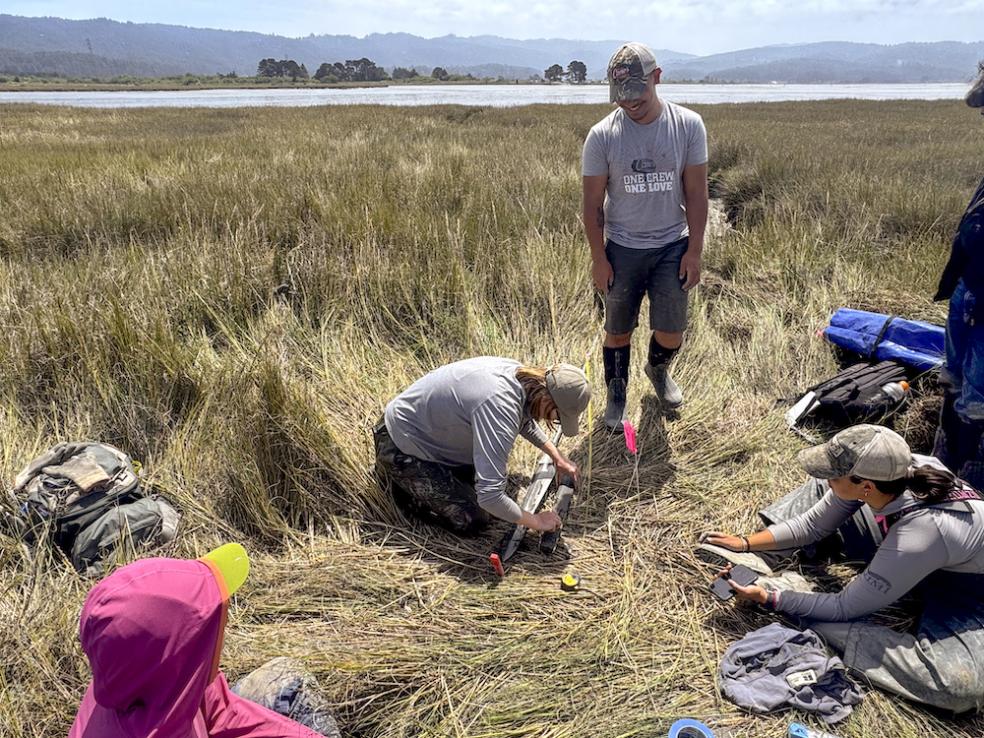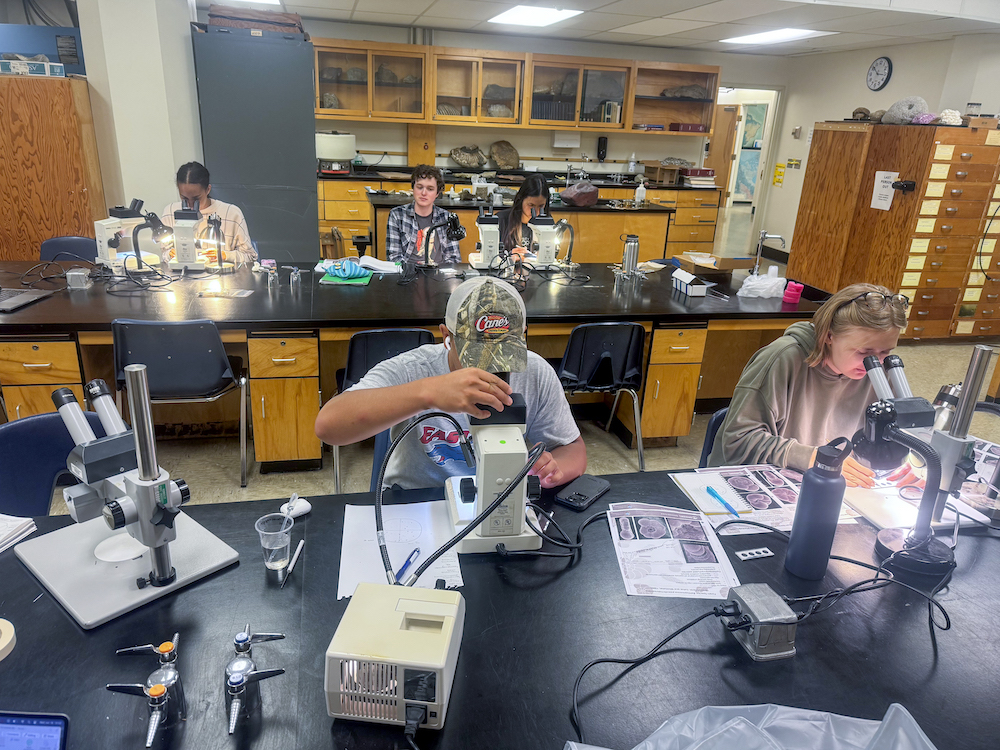
The samples were teeming with diatoms and foraminifera—microorganisms that, thanks to their sensitivity to environmental changes, preserve evidence of shifts in land elevation over time.
By studying the samples and their tiny inhabitants, they are learning to identify subsidence caused by past earthquakes, linking microscopic clues to a much larger picture of seismic risk across the region. They did so as part of a three-week course called Cores to Code. The course is a component of the Cascadia Region Earthquake Science Center (CRESCENT), a center housed out of the University of Oregon. Cores to Code aims to help train the next generation of earthquake scientists.
Cores to Code participants delve into the interdisciplinary science of subduction-zone earthquakes and tsunamis, all while getting paid to learn alongside leading geologists. In addition to stipends, the participants, who traveled to Arcata from states as widespread as Texas and Maryland, also received housing and transportation as part of the program.
The goal was to immerse students in methods used by earthquake geologists, said Harvey Kelsey, research associate in Cal Poly Humboldt’s Geology Department and one of the course instructors. Kelsey was part of a team of four Earth-science instructors, which included Tina Dura from Virginia Tech University, Andrea Hawkes from the University of North Carolina at Wilmington, and Diego Melgar from the University of Oregon. Dura, additionally, was a former postdoctoral fellow at Cal Poly Humboldt.
Over three weeks, participants first collected core samples in local marshes and analyzed the data. They used microscopes to identify changes in diatom and foraminifera species across different soil layers, a method that identifies how much land subsidence can occur during subduction zone earthquakes. They then learned coding skills and worked with computer models to understand how the data they collected helps inform models of earthquakes along the Cascadia Subduction Zone.

The students also participated in a meet-and-greet afternoon session with five local emergency preparedness managers. Kelsey explained, “Although the course mainly addressed science issues, the students were interested in how scientific information can be transferred to emergency preparedness managers who are responsible for community safety through understanding hazard and consequent risk.”
Kelsey noted that Humboldt was an extremely accommodating venue for the meeting, with use of class rooms and labs in Van Matre and Founders Hall, and in the Geography department’s Kosmos Lab for the computer modeling exercise.
“Hosting Cores to Code at Humboldt was a perfect fit. We have the natural landscape, the facilities, and the people to support hands-on, field-based and lab-based learning. It’s the kind of experience that sticks with students long after the summer ends,” said Kelsey.